Thien Huynh-The
Integration of TinyML and LargeML: A Survey of 6G and Beyond
May 20, 2025Abstract:The transition from 5G networks to 6G highlights a significant demand for machine learning (ML). Deep learning models, in particular, have seen wide application in mobile networking and communications to support advanced services in emerging wireless environments, such as smart healthcare, smart grids, autonomous vehicles, aerial platforms, digital twins, and the metaverse. The rapid expansion of Internet-of-Things (IoT) devices, many with limited computational capabilities, has accelerated the development of tiny machine learning (TinyML) and resource-efficient ML approaches for cost-effective services. However, the deployment of large-scale machine learning (LargeML) solutions require major computing resources and complex management strategies to support extensive IoT services and ML-generated content applications. Consequently, the integration of TinyML and LargeML is projected as a promising approach for future seamless connectivity and efficient resource management. Although the integration of TinyML and LargeML shows abundant potential, several challenges persist, including performance optimization, practical deployment strategies, effective resource management, and security considerations. In this survey, we review and analyze the latest research aimed at enabling the integration of TinyML and LargeML models for the realization of smart services and applications in future 6G networks and beyond. The paper concludes by outlining critical challenges and identifying future research directions for the holistic integration of TinyML and LargeML in next-generation wireless networks.
Applications of Distributed Machine Learning for the Internet-of-Things: A Comprehensive Survey
Oct 16, 2023Abstract:The emergence of new services and applications in emerging wireless networks (e.g., beyond 5G and 6G) has shown a growing demand for the usage of artificial intelligence (AI) in the Internet of Things (IoT). However, the proliferation of massive IoT connections and the availability of computing resources distributed across future IoT systems have strongly demanded the development of distributed AI for better IoT services and applications. Therefore, existing AI-enabled IoT systems can be enhanced by implementing distributed machine learning (aka distributed learning) approaches. This work aims to provide a comprehensive survey on distributed learning for IoT services and applications in emerging networks. In particular, we first provide a background of machine learning and present a preliminary to typical distributed learning approaches, such as federated learning, multi-agent reinforcement learning, and distributed inference. Then, we provide an extensive review of distributed learning for critical IoT services (e.g., data sharing and computation offloading, localization, mobile crowdsensing, and security and privacy) and IoT applications (e.g., smart healthcare, smart grid, autonomous vehicle, aerial IoT networks, and smart industry). From the reviewed literature, we also present critical challenges of distributed learning for IoT and propose several promising solutions and research directions in this emerging area.
A Survey on Federated Learning for the Healthcare Metaverse: Concepts, Applications, Challenges, and Future Directions
Apr 05, 2023



Abstract:Recent technological advancements have considerately improved healthcare systems to provide various intelligent healthcare services and improve the quality of life. Federated learning (FL), a new branch of artificial intelligence (AI), opens opportunities to deal with privacy issues in healthcare systems and exploit data and computing resources available at distributed devices. Additionally, the Metaverse, through integrating emerging technologies, such as AI, cloud edge computing, Internet of Things (IoT), blockchain, and semantic communications, has transformed many vertical domains in general and the healthcare sector in particular. Obviously, FL shows many benefits and provides new opportunities for conventional and Metaverse healthcare, motivating us to provide a survey on the usage of FL for Metaverse healthcare systems. First, we present preliminaries to IoT-based healthcare systems, FL in conventional healthcare, and Metaverse healthcare. The benefits of FL in Metaverse healthcare are then discussed, from improved privacy and scalability, better interoperability, better data management, and extra security to automation and low-latency healthcare services. Subsequently, we discuss several applications pertaining to FL-enabled Metaverse healthcare, including medical diagnosis, patient monitoring, medical education, infectious disease, and drug discovery. Finally, we highlight significant challenges and potential solutions toward the realization of FL in Metaverse healthcare.
Need of 6G for the Metaverse Realization
Dec 28, 2022Abstract:The concept of the Metaverse aims to bring a fully-fledged extended reality environment to provide next generation applications and services. Development of the Metaverse is backed by many technologies, including, 5G, artificial intelligence, edge computing and extended reality. The advent of 6G is envisaged to mark a significant milestone in the development of the Metaverse, facilitating near-zero-latency, a plethora of new services and upgraded real-world infrastructure. This paper establishes the advantages of providing the Metaverse services over 6G along with an overview of the demanded technical requirements. The paper provides an insight to the concepts of the Metaverse and the envisaged technical capabilities of 6G mobile networks. Then, the technical aspects covering 6G for the development of the Metaverse, ranging from validating digital assets, interoperability, and efficient user interaction in the Metaverse to related security and privacy aspects are elaborated. Subsequently, the role of 6G technologies towards enabling the Metaverse, including artificial intelligence, blockchain, open radio access networks, edge computing, cloudification and internet of everything. The paper also presents 6G integration challenges and outlines ongoing projects towards developing the Metaverse technologies to facilitate the Metaverse applications and services.
Edge Computing for Semantic Communication Enabled Metaverse: An Incentive Mechanism Design
Dec 13, 2022Abstract:Semantic communication (SemCom) and edge computing are two disruptive solutions to address emerging requirements of huge data communication, bandwidth efficiency and low latency data processing in Metaverse. However, edge computing resources are often provided by computing service providers and thus it is essential to design appealingly incentive mechanisms for the provision of limited resources. Deep learning (DL)- based auction has recently proposed as an incentive mechanism that maximizes the revenue while holding important economic properties, i.e., individual rationality and incentive compatibility. Therefore, in this work, we introduce the design of the DLbased auction for the computing resource allocation in SemComenabled Metaverse. First, we briefly introduce the fundamentals and challenges of Metaverse. Second, we present the preliminaries of SemCom and edge computing. Third, we review various incentive mechanisms for edge computing resource trading. Fourth, we present the design of the DL-based auction for edge resource allocation in SemCom-enabled Metaverse. Simulation results demonstrate that the DL-based auction improves the revenue while nearly satisfying the individual rationality and incentive compatibility constraints.
Metaverse for Healthcare: A Survey on Potential Applications, Challenges and Future Directions
Sep 09, 2022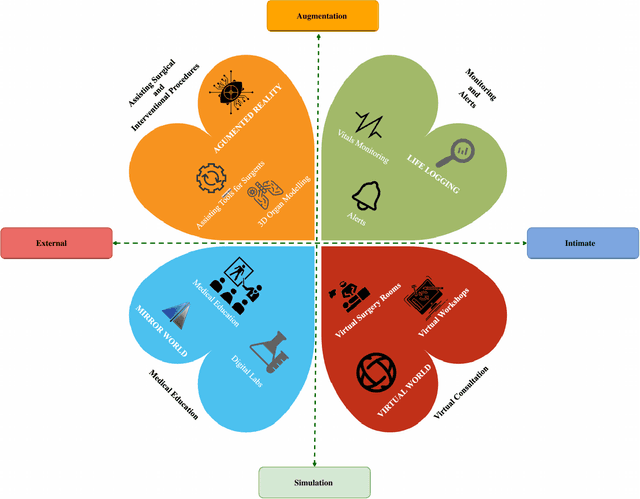

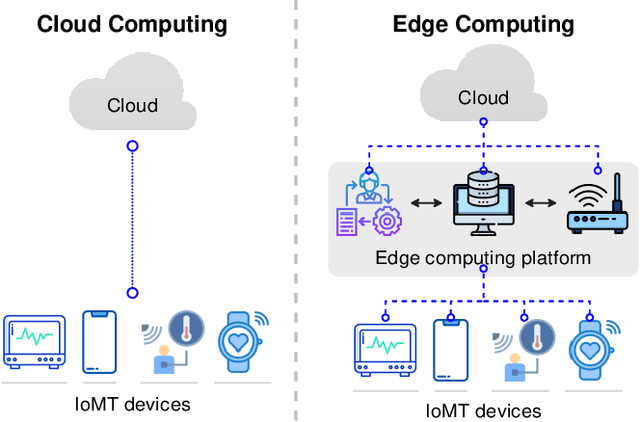
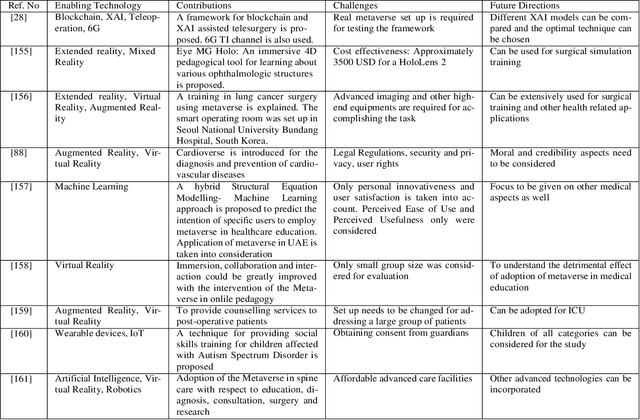
Abstract:The rapid progress in digitalization and automation have led to an accelerated growth in healthcare, generating novel models that are creating new channels for rendering treatment with reduced cost. The Metaverse is an emerging technology in the digital space which has huge potential in healthcare, enabling realistic experiences to the patients as well as the medical practitioners. The Metaverse is a confluence of multiple enabling technologies such as artificial intelligence, virtual reality, augmented reality, internet of medical devices, robotics, quantum computing, etc. through which new directions for providing quality healthcare treatment and services can be explored. The amalgamation of these technologies ensures immersive, intimate and personalized patient care. It also provides adaptive intelligent solutions that eliminates the barriers between healthcare providers and receivers. This article provides a comprehensive review of the Metaverse for healthcare, emphasizing on the state of the art, the enabling technologies for adopting the Metaverse for healthcare, the potential applications and the related projects. The issues in the adaptation of the Metaverse for healthcare applications are also identified and the plausible solutions are highlighted as part of future research directions.
Artificial Intelligence for the Metaverse: A Survey
Feb 15, 2022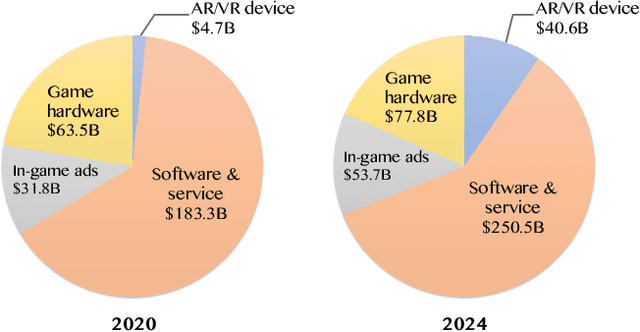
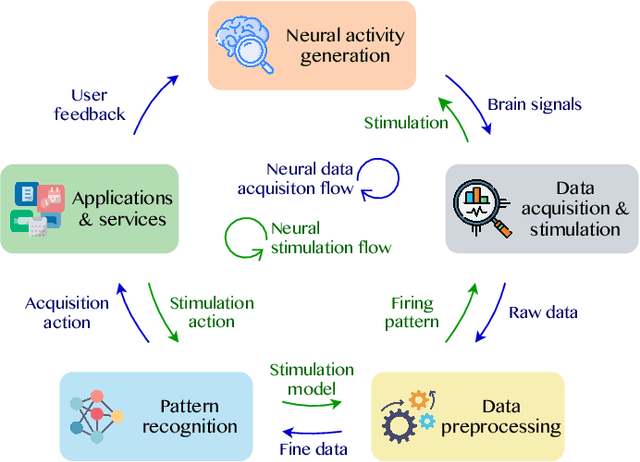
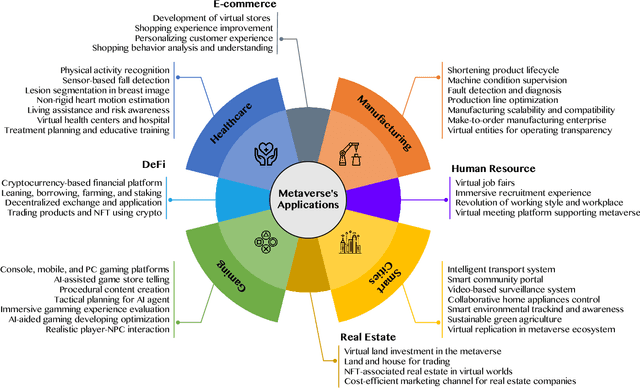

Abstract:Along with the massive growth of the Internet from the 1990s until now, various innovative technologies have been created to bring users breathtaking experiences with more virtual interactions in cyberspace. Many virtual environments with thousands of services and applications, from social networks to virtual gaming worlds, have been developed with immersive experience and digital transformation, but most are incoherent instead of being integrated into a platform. In this context, metaverse, a term formed by combining meta and universe, has been introduced as a shared virtual world that is fueled by many emerging technologies, such as fifth-generation networks and beyond, virtual reality, and artificial intelligence (AI). Among such technologies, AI has shown the great importance of processing big data to enhance immersive experience and enable human-like intelligence of virtual agents. In this survey, we make a beneficial effort to explore the role of AI in the foundation and development of the metaverse. We first deliver a preliminary of AI, including machine learning algorithms and deep learning architectures, and its role in the metaverse. We then convey a comprehensive investigation of AI-based methods concerning six technical aspects that have potentials for the metaverse: natural language processing, machine vision, blockchain, networking, digital twin, and neural interface, and being potential for the metaverse. Subsequently, several AI-aided applications, such as healthcare, manufacturing, smart cities, and gaming, are studied to be deployed in the virtual worlds. Finally, we conclude the key contribution of this survey and open some future research directions in AI for the metaverse.
Explainable AI for B5G/6G: Technical Aspects, Use Cases, and Research Challenges
Dec 09, 2021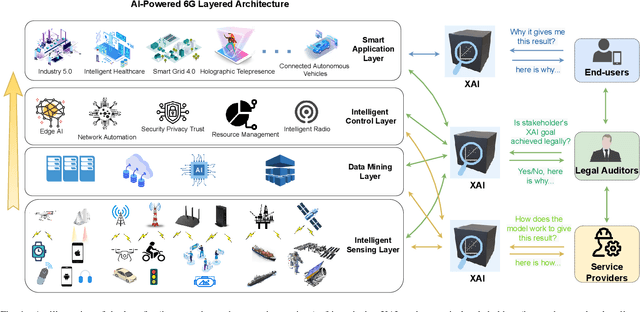
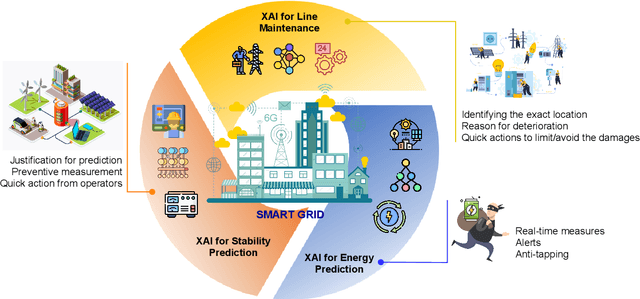
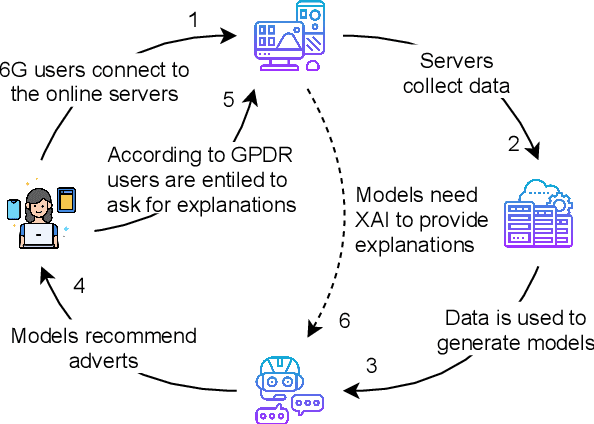
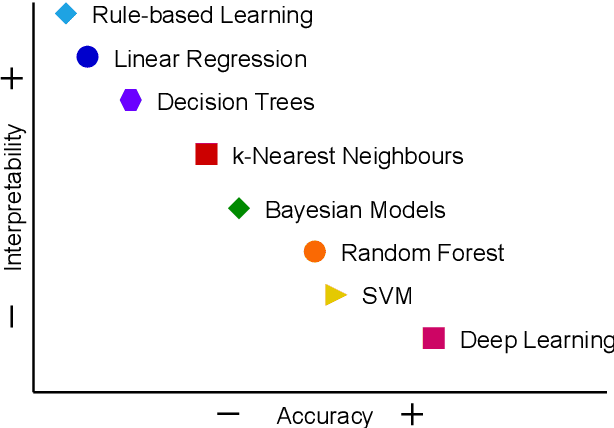
Abstract:When 5G began its commercialisation journey around 2020, the discussion on the vision of 6G also surfaced. Researchers expect 6G to have higher bandwidth, coverage, reliability, energy efficiency, lower latency, and, more importantly, an integrated "human-centric" network system powered by artificial intelligence (AI). Such a 6G network will lead to an excessive number of automated decisions made every second. These decisions can range widely, from network resource allocation to collision avoidance for self-driving cars. However, the risk of losing control over decision-making may increase due to high-speed data-intensive AI decision-making beyond designers and users' comprehension. The promising explainable AI (XAI) methods can mitigate such risks by enhancing the transparency of the black box AI decision-making process. This survey paper highlights the need for XAI towards the upcoming 6G age in every aspect, including 6G technologies (e.g., intelligent radio, zero-touch network management) and 6G use cases (e.g., industry 5.0). Moreover, we summarised the lessons learned from the recent attempts and outlined important research challenges in applying XAI for building 6G systems. This research aligns with goals 9, 11, 16, and 17 of the United Nations Sustainable Development Goals (UN-SDG), promoting innovation and building infrastructure, sustainable and inclusive human settlement, advancing justice and strong institutions, and fostering partnership at the global level.
Federated Learning for Big Data: A Survey on Opportunities, Applications, and Future Directions
Oct 17, 2021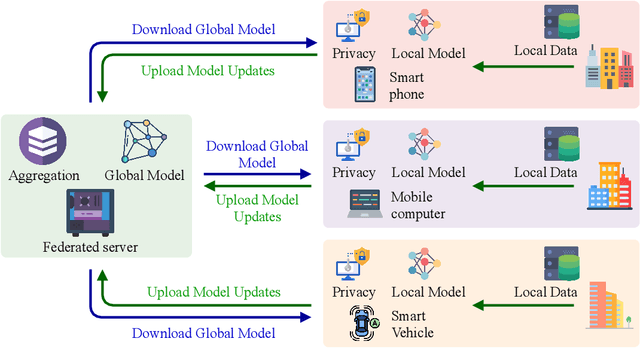
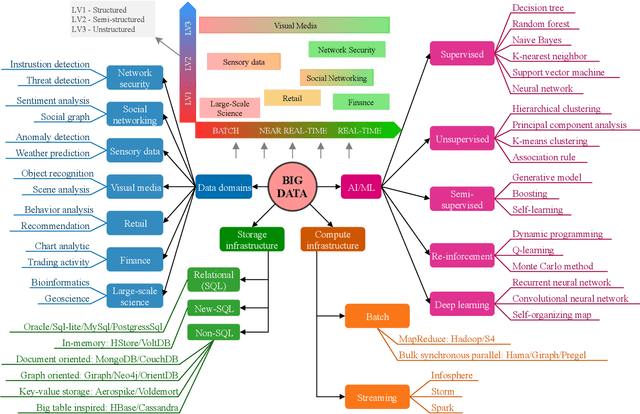

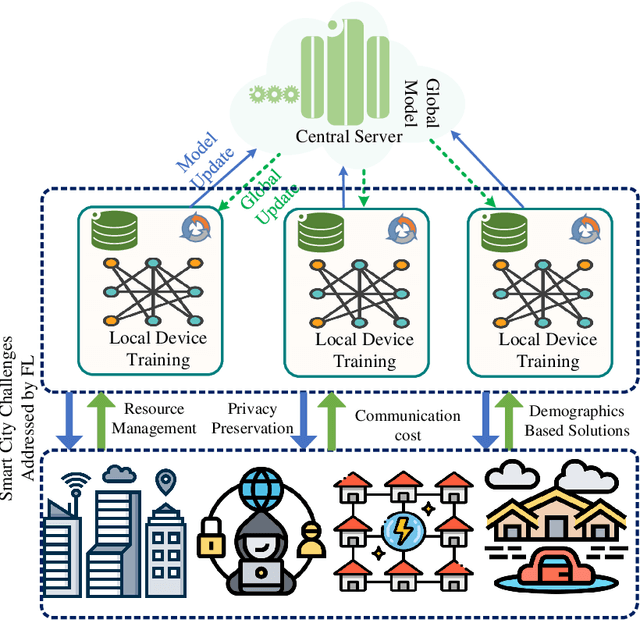
Abstract:Big data has remarkably evolved over the last few years to realize an enormous volume of data generated from newly emerging services and applications and a massive number of Internet-of-Things (IoT) devices. The potential of big data can be realized via analytic and learning techniques, in which the data from various sources is transferred to a central cloud for central storage, processing, and training. However, this conventional approach faces critical issues in terms of data privacy as the data may include sensitive data such as personal information, governments, banking accounts. To overcome this challenge, federated learning (FL) appeared to be a promising learning technique. However, a gap exists in the literature that a comprehensive survey on FL for big data services and applications is yet to be conducted. In this article, we present a survey on the use of FL for big data services and applications, aiming to provide general readers with an overview of FL, big data, and the motivations behind the use of FL for big data. In particular, we extensively review the use of FL for key big data services, including big data acquisition, big data storage, big data analytics, and big data privacy preservation. Subsequently, we review the potential of FL for big data applications, such as smart city, smart healthcare, smart transportation, smart grid, and social media. Further, we summarize a number of important projects on FL-big data and discuss key challenges of this interesting topic along with several promising solutions and directions.
Machine Learning-based Reconfigurable Intelligent Surface-aided MIMO Systems
May 01, 2021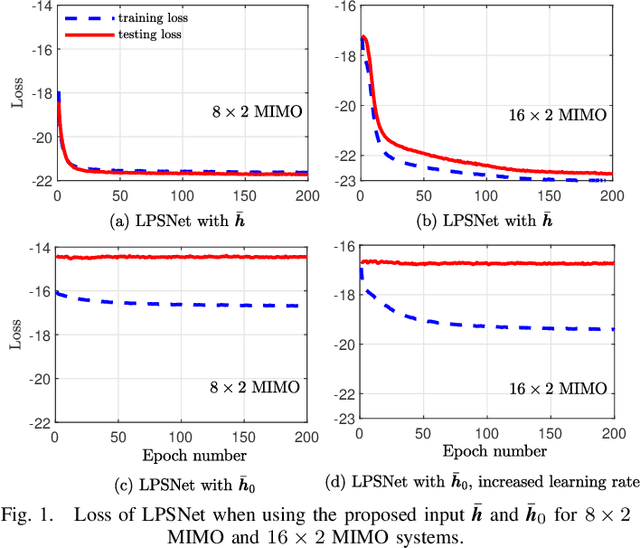
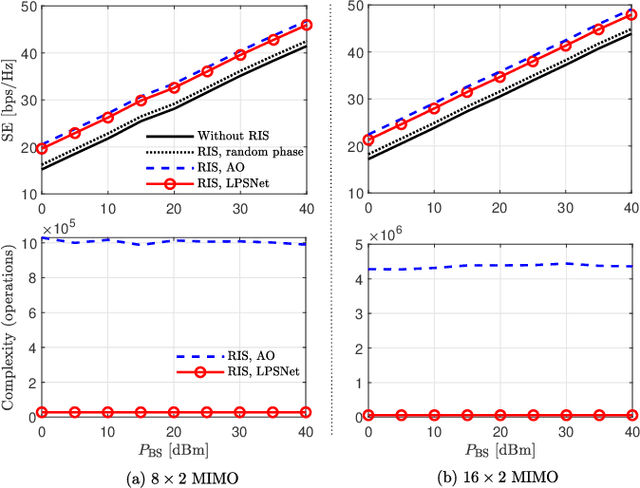
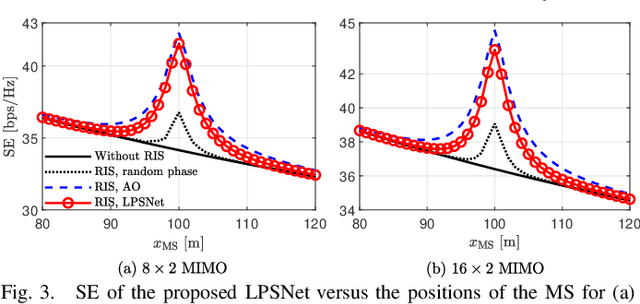

Abstract:Reconfigurable intelligent surface (RIS) technology has recently emerged as a spectral- and cost-efficient approach for wireless communications systems. However, existing hand-engineered schemes for passive beamforming design and optimization of RIS, such as the alternating optimization (AO) approaches, require a high computational complexity, especially for multiple-input-multiple-output (MIMO) systems. To overcome this challenge, we propose a low-complexity unsupervised learning scheme, referred to as learning-phase-shift neural network (LPSNet), to efficiently find the solution to the spectral efficiency maximization problem in RIS-aided MIMO systems. In particular, the proposed LPSNet has an optimized input structure and requires a small number of layers and nodes to produce efficient phase shifts for the RIS. Simulation results for a 16x2 MIMO system assisted by an RIS with 40 elements show that the LPSNet achieves 97.25% of the SE provided by the AO counterpart with more than a 95% reduction in complexity.
 Add to Chrome
Add to Chrome Add to Firefox
Add to Firefox Add to Edge
Add to Edge